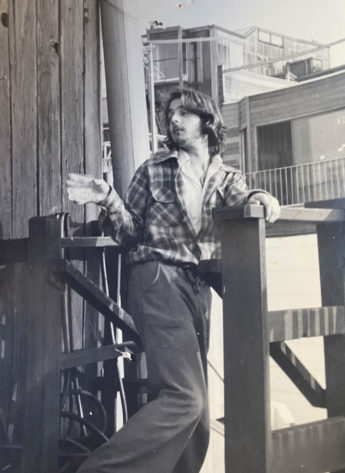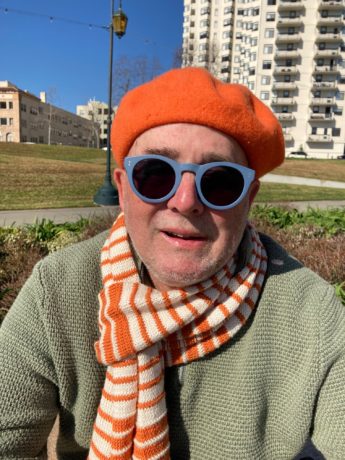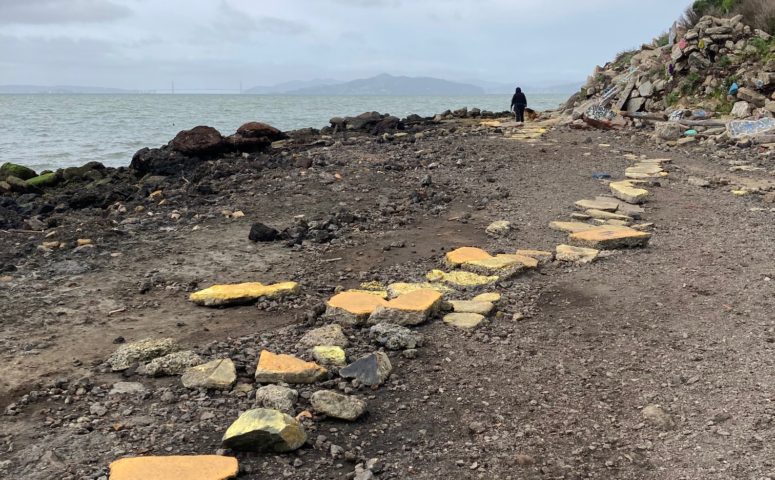This interview begins a series of conversations that we are going to publish in 2022. Many of them will focus on art making. The first interview is with the editor himself.
Q: Are you actually retiring from consulting?
A: I am calling it “rewiring.” I am not going to place articles or ghostwrite or prepare written materials for my architecture clients. But should any of my former clients contact me, I will respond. In the famous words of consultant Patrick Bell, “No deliverables.”
Q: Has your thinking about design and communications changed?
A: I think my core idea about relationships as the basis of getting work still stands. But the tools for connecting have changed. I don’t mean just the current social media platforms like LinkedIn or Instagram, but also new ways of reaching people and targeting communications. That is for the next wave of communicators to figure out.
Q: How did you get started in architecture?
A: I got a job as an office boy who knew too much–and too little. Like most folks in the field, I had a passion for architecture ever since I was a kid. Every month, I would go to our local library and pore over Architectural Record. I fell in love with Gordon Bunshaft’s house in the Hamptons at a very young age. When I was nine or so, we went to Montreal for Expo 67 and then on to New York and Washington D.C.. Expo 67 featured works by Moshe Safdie, Arthur Erickson, Basil Spence, Frei Otto, and of course, Bucky Fuller. When we went to New York, we experienced the Guggenheim Museum. That sealed the deal! So I could talk architecture, but I had no idea how to fill a Coke machine or put rolls of paper into an IBM copier. Never mind drive a car!
Q: So what’s rewirement actually mean in your case?
A: Since 1982, I have worked for architects in research, marketing, and communications roles. Seems like 40 years might be long enough. Now is the time to focus on writing, art, and my other interests. For example, for the last several years, I have sent out a weekly online newsletter with a few of my favorite articles about architecture. It’s sort of like Utne Reader, for those who remember that publication. I called it Design Stream. It’s been relaunched as Stream and contains a few articles about art, literature, faith, and whatever else I find interesting in any given week. There will be occasional articles about architecture and urban design, but they will be more think pieces. With so many architecture blogs sending out lots of visuals on a daily basis, I don’t need to share very many straight-up project stories.
Q: But you still use Facebook?
A: It’s an easy way to share stuff. But again, fewer project stories. I want to share pieces that folks might miss. Everybody in architecture looks at ArchDaily now!
Q: You are a frequent user of social media. Are you critical of Facebook, for instance?
A: Every thinking person is in a bind every day. Of course, modern tech companies like Facebook and Amazon do awful things. Their goal is not to help humanity, but to commodify it. We all make compromises every day. How can we use social media, indeed the larger internet, to further social justice and not limit it? In graduate school, I remember participating in protests at U.C. Berkeley to try to get the university to divest from South African investments. We can create change. The challenge now is that, although the majority of Americans are unhappy with the political situation, they are not sure where change lies.
Q: Do you have a favorite social media platform?
A: Right now, it would be Pinterest. I can collect art that I can neither afford nor hang. Not to mention portraits of people who have inspired or entertained me. And of course beautiful objects like vintage automobiles.
Q: Are you hopeful about the architecture profession?
A: Although awards may not measure a great deal, I was pleased this year to see that the AIA Gold Medal went to Brooks + Scarpa and the AIA Firm Award went to MASS Design Group. Brooks + Scarpa is a firm shaped by purpose, by helping people. MASS Design, founded in 2008, is a relatively young firm that is also shaped by its mission. From the start, its reach has been international, and it is organized as a nonprofit. Both of these firms represent a hopeful direction for architecture.
Q: What about the world?
A: That’s harder! We have to remember that architecture is a small part of the world. That said, I think architects were pivotal in creating awareness about the threat of climate change. I hope they can be key in other threats like income inequality and the right to healthcare, education, and housing. The recent reversal of the AIA on designing death chambers and solitary confinement facilities is an important reminder that architects can be heard. Eventually, society will understand that prisons are an extension of slavery. Architects should be advocates for all kinds of social justice.
Q: Who is your next interview going to be with?
A: I’ll let you know as soon as I figure it out.

Preparing for a career in architectural communications (late 1970s). Photo courtesy Clifford Potts

Recovering from a career in architectural communications (2022). Photo by Paul Crabtree
